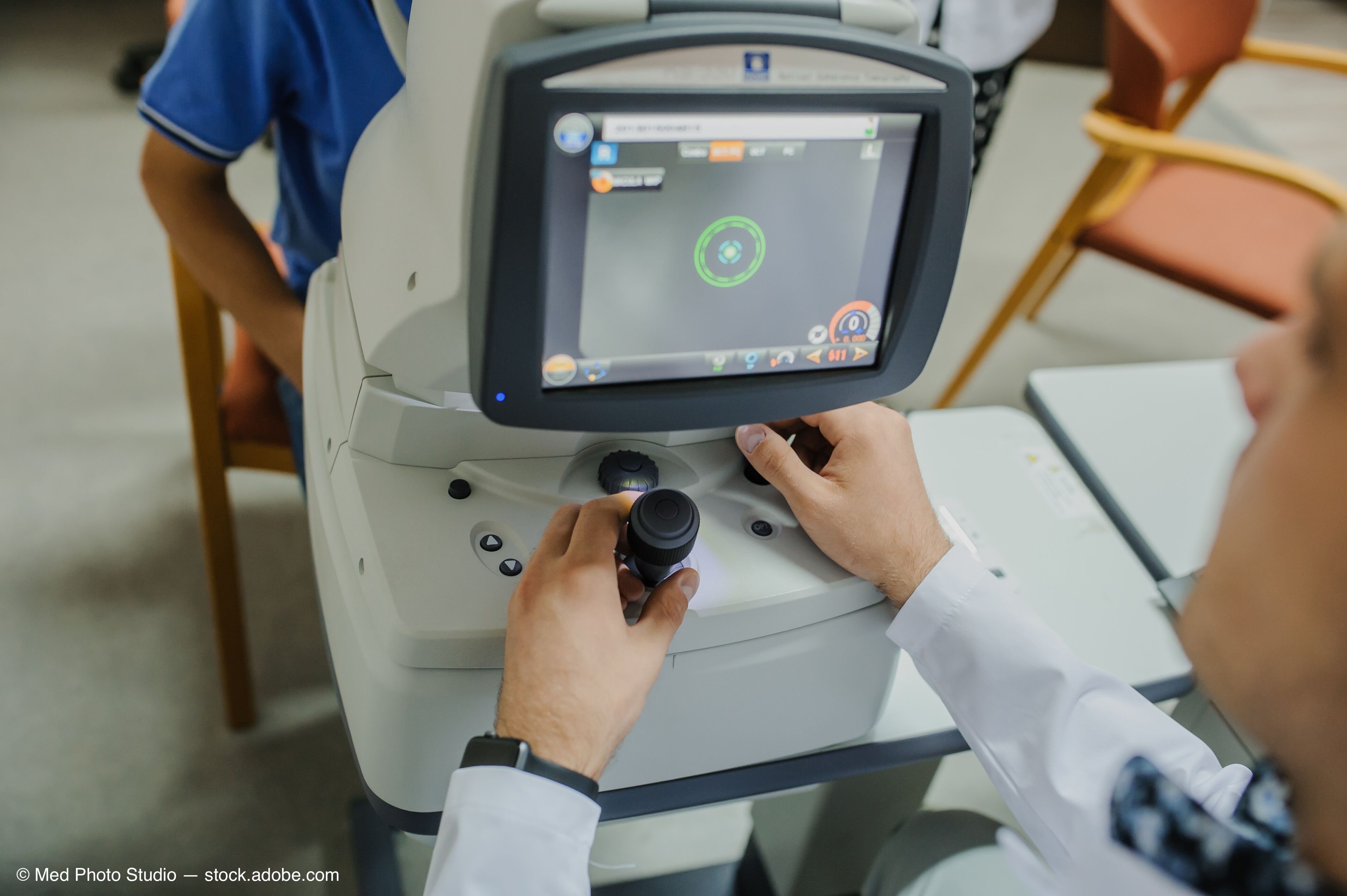Article
OCT providing physicians with improved view of ocular surface
Author(s):

Surgeons are learning not to trust surface appearances. Anterior-surface, high-resolution optical coherence tomography is looking deeper for hidden pathologies.
This article was reviewed by Carol L. Karp, MD
New technologies, such as in vivo confocal microscopy, optical coherence tomography (OCT), and ultrasound biomicroscopy, are providing new options for surgeons challenged with diagnosing ocular surface lesions. While some cases may be easier to diagnose, the pathologies in other cases may be shrouded in subtlety or complicated by other diseases.
“These new technologies can assist the ophthalmologist in the diagnosis and management of ocular surface neoplasias,” Carol L. Karp, MD, said. She demonstrated surprising diagnoses that remained undiscovered using conventional diagnostic procedures.
Dr. Karp is professor of ophthalmology, Richard K. Forster Chair in Ophthalmology, Bascom Palmer Eye Institute, University of Miami Miller School of Medicine, Miami.
Cases
Dr. Karp first recounted the case of a 28-year-old man who presented with recurrent band keratopathy and a history of HIV. The challenge is finding and diagnosing a conjunctival tumor. After considering the history and risk factors and the clinical features and course, evaluation of histopathological or optical tissue analysis is the next step.
OCT showed an abrupt transition to thickened hyperreflective epithelium over a thick area of band keratopathy. A biopsy showed conjunctival intraepithelial neoplasia and band keratopathy. The ocular surface squamous neoplasia (OSSN) was concealed.
Surgeons have a number of possible procedures to use to reach a diagnosis, such as impression cytology, confocal microscopy, and biopsies, but anterior-segment imaging seems more valuable in difficult cases for ferreting out the pathologies lurking on and below the ocular surface. For Dr. Karp, that magical device is high-resolution OCT that has a wavelength of 830 nanometers and axial resolution of 5 to 7 μm.
Pterygium
Dr. Karp recounted another illustrative case of a 64-year-old man with a pterygium. A scan revealed normal dark, thin epithelium and thickened hyperreflective stringy epithelium with an abrupt transition on both sides of the area. The pterygium had normal epithelium. The diagnosis was OSSN adjacent to the pterygium.
A third case was that of 76-year-old man with rosacea, longstanding trichiasis, and chronic scarring. The patient has been followed for the scarring, but a granular appearance inferiorly raised suspicions. A subsequent scan showed normal epithelium and an abrupt transition to thickened hyperreflective epithelium on the cornea. OSSN was also confirmed to be hiding in this patient.
Corneal OSSN
A 57-year-old woman, who was contact lens intolerant, was referred with corneal OSSN. OCT showed normal epithelium with a lesion below. The biopsy revealed a Salzmann’s nodule.
Another patient was referred with a pigmented lesion. The scan showed thin epithelium and multiple subepithelial cysts characteristic of a conjunctival nevus.
Pink salmon lesion
Another interesting case was that of a pink salmon lesion. Scanning showed normal epithelium and homogeneous hyporeflective dark dots. Biopsy and flow cytometry confirmed lymphoma. After external beam radiation, no dark dots were visualized below the epithelium on OCT.
In another patient referred for lymphoma, the clinical finding was a pink-yellowish lesions. OCT showed a subepithelial lesion with hyperreflective linear opacities that were not homogeneous, thus ruling out lymphoma. The actuality was amyloidosis.
OSSN diagnosis
In a final case, a 62-year-old woman presented with a diagnosis of OSSN. A scan showed normal epithelium and thin overlying epithelium over a subepithelial hyperreflective lesion.
This turned out to be an amelanotic melanoma.
Dr. Karp pointed out in OSSN, there is an abrupt transition from normal to abnormal epithelium and thickened hyperreflective epithelium.
“With pterygium, the epithelium is thin that may be slightly hyperreflective, but the main lesion is subepithelial, hyperreflective, and stringy,” she said. “Lymphoma is characterized by very homogeneous, dark cellular dots in contrast to amyloid the dots are linear non-homogeneous dots. Cases of melanoma characteristically have normal epithelium with hyperreflective cellular infiltrates and nevi have multiple cysts.”
Conclusion
Dr. Karp is using the technology in her own practice, and it allows her to gather more information for some tough cases.
High-resolution OCT is her go-to technology to obtain correct diagnoses in suspicious cases in which a diagnosis may be hidden.
“High-resolution OCT provides an optical biopsy with excellent correlation to histopathology and has revolutionized my management of ocular surface tumors,” she concluded.
Newsletter
Don’t miss out—get Ophthalmology Times updates on the latest clinical advancements and expert interviews, straight to your inbox.





